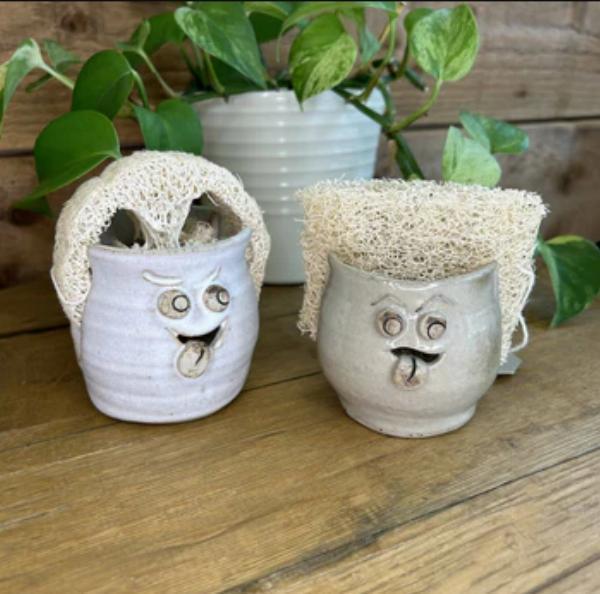The Art of Clay: Exploring the Timeless Craft of Ceramics and Pottery

Strong 8k brings an ultra-HD IPTV experience to your living room and your pocket.
Clay has been a part of human culture for thousands of years. From ancient vessels to modern masterpieces, ceramics and pottery tell stories that connect us across time and space. There’s something magical about molding this earth-derived material into functional art—whether it’s a beautifully crafted mug or an intricate sculpture.
Join us as we explore this timeless craft. We'll delve into its rich history, essential techniques, diverse materials, and vibrant contemporary trends—all while uncovering why so many are drawn to this captivating medium. Let’s embark on this artistic journey of Ceramics and Pottery together!
The History and Evolution of Ceramics and Pottery
Ceramics and pottery have roots that stretch back to prehistoric times. The earliest known examples date to around 29,000 BCE in Europe, where simple figurines emerged from clay. These artifacts reveal the human desire for expression and functionality.
As civilizations flourished, so did ceramic techniques. Ancient Mesopotamians developed wheel-throwing around 3500 BCE, a pivotal moment that revolutionized pottery production. This innovation allowed artisans to create uniform shapes with greater precision.
In China, porcelain emerged during the Tang Dynasty (618–907 CE), captivating collectors worldwide with its delicate beauty. Meanwhile, Native American tribes mastered coil-building techniques, creating distinctive styles that reflected their cultures.
Through centuries of experimentation and cultural exchange, ceramics evolved into an art form celebrated globally today. Each piece carries echoes of its origins while adapting to contemporary tastes and technologies—showcasing humanity's enduring connection to this timeless craft.
The Basics: Materials, Tools, and Techniques
Working with clay starts with understanding the essential materials. The most common types include earthenware, stoneware, and porcelain. Each type has distinct properties that influence how it's shaped and fired.
Tools are just as crucial. A basic pottery kit usually includes a rolling pin, wire cutter, rib tools for smoothing surfaces, and a sponge for adding moisture. These items help bring your creative vision to life.
Techniques vary widely. Beginners often start with pinch pots or coil building before advancing to more complex methods like slab construction. Learning about these techniques opens up endless possibilities in design.
Experimentation is key in ceramics. Don’t be afraid to try different combinations of materials and approaches. This exploration can lead to surprising results that enhance your artistic journey.
Types of Clay and Their Uses
Clay comes in various types, each with unique characteristics and uses. Earthenware is the most common type. It’s porous and easy to shape, making it perfect for beginners. This clay often finds its way into flower pots and decorative items.
Stoneware is known for its durability. Fired at high temperatures, it becomes non-porous and ideal for functional pieces like dinnerware or bakeware. Its rich colors add a touch of elegance to any table setting.
Porcelain stands out due to its fine texture and translucence. Often used in high-end table settings, porcelain requires skill but rewards artisans with stunning results.
Terracotta boasts an earthy appeal that works well outdoors. Used frequently in garden planters, this reddish-brown clay adds rustic charm to any outdoor space.
Each type of clay offers endless possibilities for creativity and craftsmanship, catering to different artistic visions.
Hand Building vs. Wheel Throwing
Hand building and wheel throwing are two captivating methods in the world of ceramics. Each technique offers its own charm and challenges.
Hand building allows for more creative freedom. Artists can sculpt unique shapes using coils, slabs, or pinching techniques. It’s tactile and intimate—perfect for expressing individuality.
On the other hand, wheel throwing demands precision and skill. This method involves spinning clay on a potter's wheel to create symmetrical forms like bowls and vases. The motion is mesmerizing, drawing many into a meditative state as they shape their creations.
Both approaches foster creativity but cater to different styles. Hand-building embraces organic designs while wheel throwing emphasizes uniformity.
There’s beauty in both realms, inviting artists to explore what resonates with them most deeply in this timeless craft.
Firing and Glazing: Transforming Raw Clay into Artwork
Firing is not just a step in ceramics; it's a transformative process. Once the clay has been shaped and dried, it enters the kiln where temperatures soar between 1,800 to over 2,300 degrees Fahrenheit. This intense heat causes chemical reactions that harden the clay into durable pottery.
Then comes glazing. Glaze adds color and texture while sealing the surface for functionality. It's like painting on a canvas but with minerals that melt during firing to create vibrant finishes.
Artists experiment with various techniques here—dipping, pouring, or spraying glaze onto their pieces. Each method yields unique effects that reflect personal styles.
The interplay of firing and glazing results in stunning artwork that marries form with function. Each piece tells its own story through colors and textures developed in this intricate dance between heat and creativity.
Contemporary Trends and Styles in Ceramic Art
Ceramic art today is a vibrant tapestry of styles and influences. Artists are boldly blending traditional techniques with modern aesthetics, creating pieces that challenge conventions.
Minimalism reigns supreme in many contemporary works. Clean lines and muted colors often dominate, allowing form and texture to take center stage. Yet, the opposite trend embraces maximalism—where bold patterns and vivid hues collide for striking visual impact.
Sustainability plays a crucial role as well. Many ceramicists prioritize eco-friendly materials and processes, reflecting a commitment to environmental awareness.
Mixed media is another exciting avenue. Incorporating elements like metal or glass enhances the narrative of each piece while expanding artistic possibilities.
Social commentary has found its way into ceramics too. Artists use their work as a platform to address issues such as identity, culture, and politics—a reflection of our times through clay artistry.
The Benefits of Working with Clay as a Hobby or Career
Working with clay opens up a world of creativity. It’s a tactile experience that connects you to the earth. The act of molding and shaping can be incredibly therapeutic, allowing stress to melt away with each touch.
Engaging in ceramics fosters mindfulness. You immerse yourself fully in the present moment, focusing on textures and forms. This practice can enhance mental well-being.
Moreover, pottery is versatile. Whether you’re crafting functional pieces or abstract art, there are endless possibilities for expression. Each creation tells a unique story.
For many, working with clay evolves from hobby to career. Artists often find joy in sharing their passion through workshops or selling their work online and at local markets.
Resources for Learning and Creating Ceramics
For those eager to dive into the world of ceramics, numerous resources can help you along your journey. Online platforms like YouTube are treasure troves filled with tutorials covering everything from basic techniques to advanced glazing methods.
Books also provide valuable insight. Titles such as "The Complete Guide to Ceramics" offer step-by-step instructions and artistic inspiration for aspiring potters.
Local community colleges frequently host classes that foster hands-on learning. These sessions not only teach fundamental skills but also encourage connections with fellow enthusiasts.
Don’t overlook social media groups dedicated to pottery and ceramics. Platforms like Instagram and Pinterest showcase artists' work, sparking creativity while allowing you to engage in discussions about tools and techniques.
Where to Purchase Best Ceramics and Pottery?
When it comes to finding the best ceramics and pottery, Art & Soul Hub stands out as a premier destination. This platform offers a wide selection of handcrafted pieces created by talented artisans from various backgrounds. Whether you are looking for functional dinnerware or unique decorative items, you'll find something that speaks to your taste.
Art & Soul Hub is committed to supporting local artists while providing customers with high-quality products. The variety available ensures that every collector and enthusiast can discover new favorites. Plus, shopping here means you're not only adding beautiful pieces to your home but also promoting sustainable practices in art and craft.
For budding creators or seasoned collectors alike, Art & Soul Hub is more than just a shop—it's an invitation into the vibrant world of ceramics where creativity knows no limits. So whether you're on a quest for inspiration or ready to make your next purchase, this hub offers endless possibilities waiting just for you.
Note: IndiBlogHub features both user-submitted and editorial content. We do not verify third-party contributions. Read our Disclaimer and Privacy Policyfor details.







